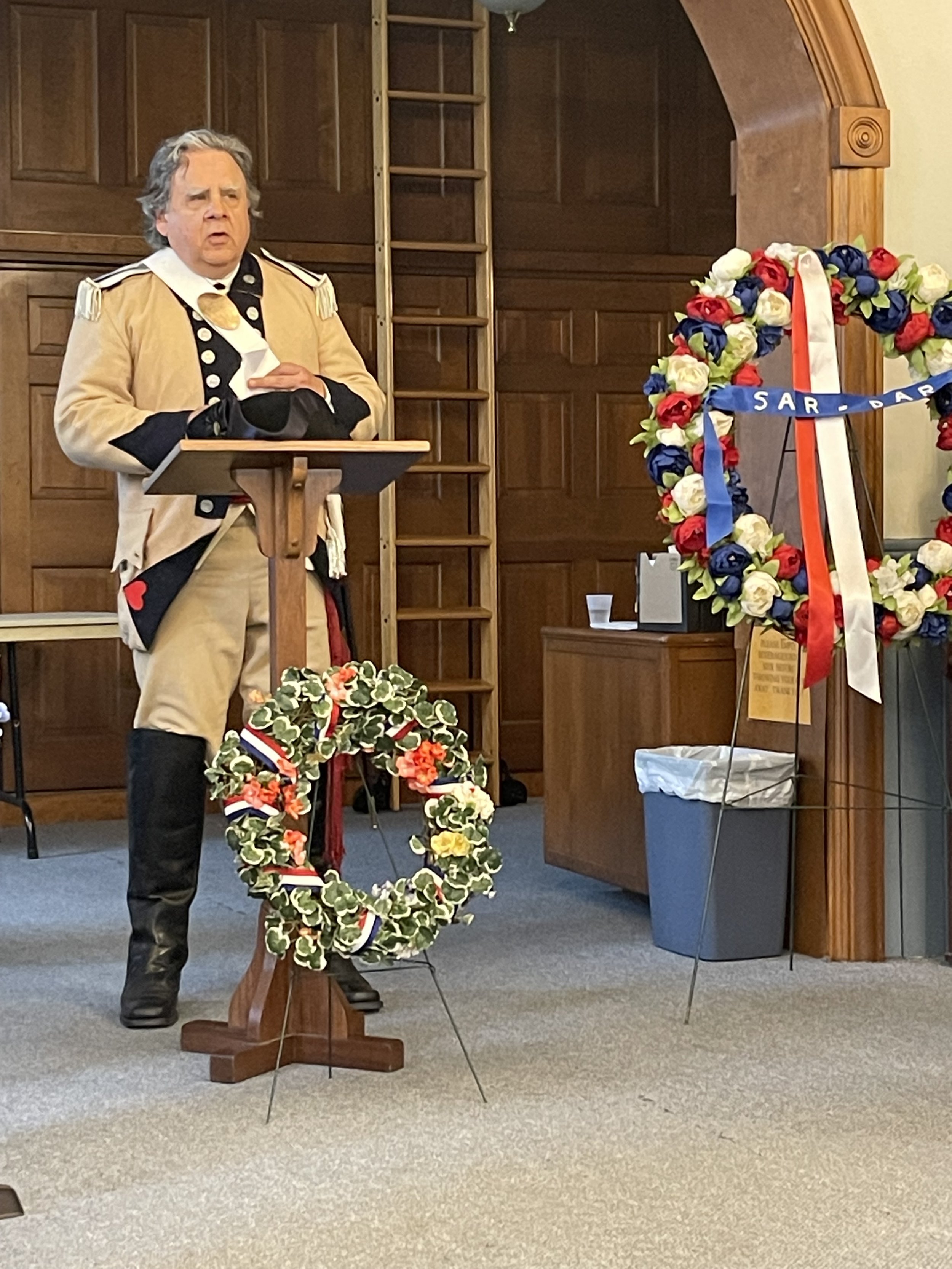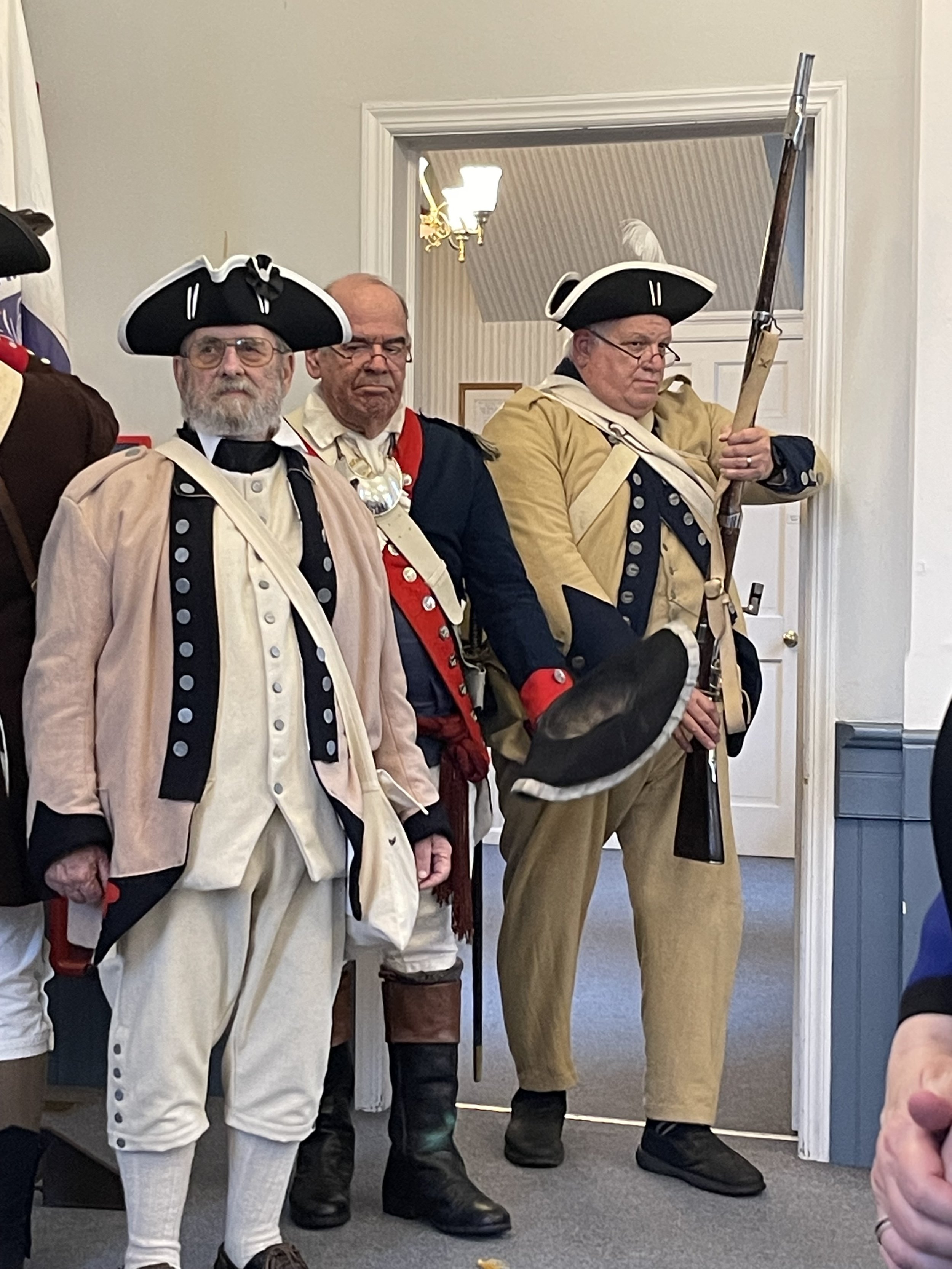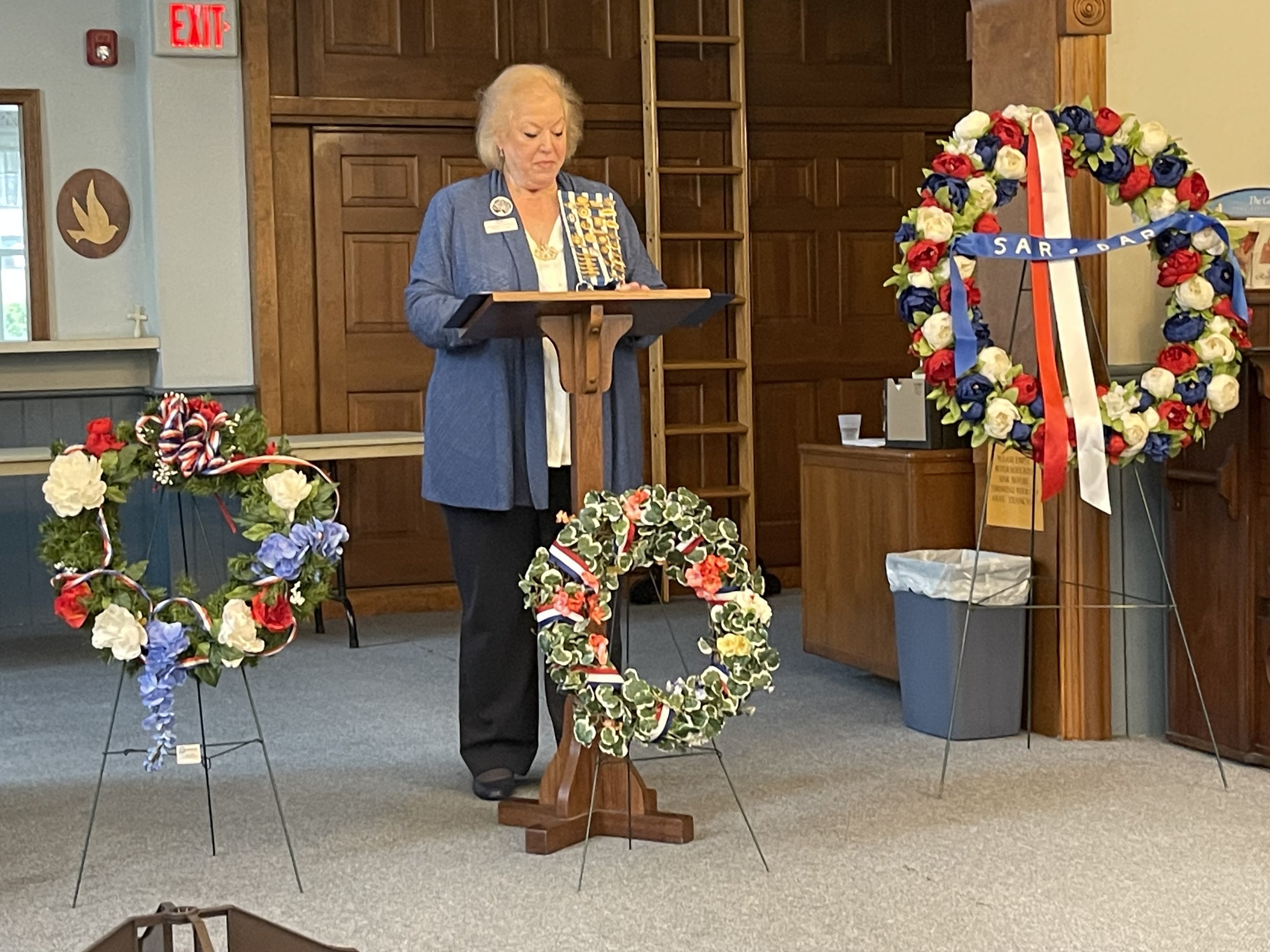The Color Guard of the New Jersey Society Sons of the American Revolution. joined The Church and Cannon Chapter of the New Jersey Society, Daughters of the American Revolution at the First Presbyterian Church of Springfield to commemorate the Battle of Connecticut Farms, on June 7, 1780, and the Battle of Springfield on June 23, 1780 - the last to occur in the Northern Theater of Operations.
Under the command of the Hessian general Baron Wilhelm von Knyphausen, British forces attempted an invasion of New Jersey in the spring of 1780, speculating that local residents, fatigued by the war, would welcome them. Originating in Staten Island and marching through Elizabethtown, Knyphausen intended to capture the strategic Hobart Gap, enabling a march on American headquarters in Morristown. British forces consisted of elements from the Brigade of Guards, the Cheshire Regiment, Black Watch, 43rd Regiment of Foot, Royal Regiment of Artillery, 17th Lancers, 1st American Regiment (Queen's Rangers), Jäger Corps the Musketeer Regiment von Donop, and Musketeer Regiment von Bose. Springfield had been the site of frequent raids and plundering missions by British forces earlier, resulting in a particularly vigilant population. One raid, on June 7, 1780, known as the Battle of Connecticut Farms, resulted in the burning of the community in what is now Union Township, New Jersey, when Hannah Caldwell was killed.
When Knyphausen moved in force toward the Hobart Gap, American troops, consisting of regular troops from Rhode Island, troops under Light Horse Harry Lee, and New Jersey militia, decided to take a stand in the small village of Springfield. As it turned out, George Washington had held his general headquarters in Springfield until the day before but left the defense to General Nathanael Greene.
On June 23, the invaders approached in 2 columns. Gen. Nathaniel Greene was advantageously posted. The British force, about 5,000-men strong, with cavalry and almost 20 cannon, seemed sufficient to crush any American army that might oppose them. Gen. George Washington had left the area, leaving Greene in the vicinity with Col. Angell and his Rhode Islanders at the Rahway River vicinity. For more than 40 minutes, Angell and his men fought 5 times their numbers to a standstill. The British slowly pushed the militia back to the second bridge over Van Winkle’s Brook on Morris Avenue. During the heat of the battle, Reverend James Caldwell, Chaplain of Col. Elias Dayton’s Regiment, whose wife had been murdered 16 days before, passed out Watts Hymnals from the Presbyterian Church for use as wadding. His cry of “Give Them Watts, Boys”, has lived on the become a Motto of that conflict.
The British resorted to burning and looting. Only four houses remained after the battle. After setting fire to Springfield, they retreated to the shore, and crossed over in haste from Elizabethtown Point to Staten Island on a bridge of boats. Clinton had lost a rare opportunity for the conquest of New Jersey, and possibly the destruction or dispersion of Washington's army.
The British goal of reaching Morristown was thwarted, and the Battle of Springfield marked the last invasion of the British into New Jersey and removed the danger of the final defeat of the Continental forces. This was one of the last major engagements of the Revolutionary War in the north and effectively ended British ambitions in New Jersey. Because the war's decisive battles moved further south, the Battle of Springfield became known as the "forgotten victory." The river crossings where American forces put up their defense were near today's intersection between Vauxhall Road and Millburn Avenue; and Morris Avenue near Washington Avenue.
Text Credit: myrevolutionarywar.com/battles/800623-springfield/
The Battles of the Connecticut Farms and Springfield
Map Credit: From Thomas Fleming’s The Forgotten Victory: The Battle for New Jersey, 1780 Reader’s Digest Press (1973)


















































